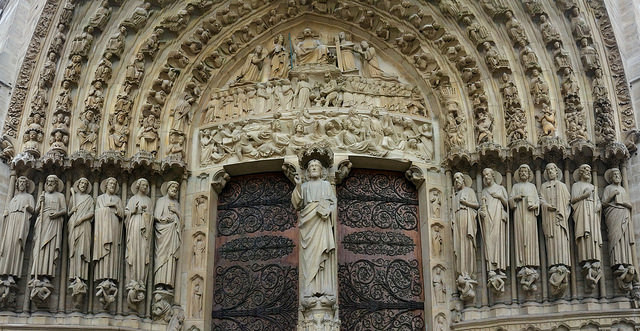Aero: Kelsey Castro – France 2015 – History and Culture

Aero: Kelsey Castro – France 2015 – History and Culture
Creative Commons Image via The LEAF Project
Aero: Kelsey Castro – France 2015 – History and Culture
…
…

Kelsey Castro
Being able to see history with my own eyes is what I was most excited about before traveling to France. I have always been extremely interested in the history of the ancient world, and knowing that I would have the chance to step foot on land that was once part of the Roman Empire was astounding to me. On our first day in Paris, the history and culture of the land was immediately apparent. One of our first stops was the remains of an old Roman amphitheater. I remember walking into the circle and just smiling…I couldn’t believe that I was standing on the same ground that Roman gladiators once stood. It was an incredible experience, and I will never forget that feeling. That was only the first of many amazing historical sites that we visited in Paris, from standing under the Arc de Triomphe to getting an up close view of the Code of Hammurabi while we were at the Louvre.
I found our day trip to Normandy to be the most surreal experience, particularly because it is relevant to both French and American culture, and the fact that my Great Grandfather served in World War II. Along with the history of the Greco-Roman world, I also really enjoy learning about World War II. In fact, finding out that the France study abroad course included a trip to Normandy was what sealed the deal for me. I knew that I could not pass up that type of experience.
The Normandy American Cemetery is actually sovereign American soil, similar to an embassy. I noticed that the signs in the parking lot said, “Exit” instead of “Sortie” and found that interesting. The cemetery is extremely well maintained and very pristine. It is located right above a pathway down to the Omaha Beachfront; where so many of our men were killed during the D-Day landings. While I was standing on the beach, the sun was shining above me and the waves were leisurely lulling. Omaha was the most heavily defended Normandy beach, and casualties were around 2,000. I stood there and tried to imagine how the scenery would have been different 71 years ago. It was a very overwhelming experience, and actually being there helps to erase some of the disconnect between what we see in movies and reality. Hollywood has a habit of glamorizing war. Along with standing on Omaha Beach, walking through the cemetery was also very surreal. Professor Van Etten reminded all of us that the crosses we were looking at weren’t crosses, they were people. I think that is something very important to realize and really think about. In addition, not all of the gravestones were crosses. There were quite a few Stars of David that I saw, as well as one crescent present in the cemetery (although I never found it). Some of the gravestones had names, and some of them said “Here Rests In Honored Glory, A Comrade In Arms Known But To God.”
After the cemetery, we went to Pointe du Hoc, which is about 4 miles west of Omaha Beach. The German army had 155mm guns and concrete bunkers fortified here, the remains of which can still be seen today. On D-Day, the United States Ranger Commanders of the 116th infantry scaled the 100ft cliffs and captured Pointe du Hoc. Unlike the polished cemetery, Pointe du Hoc has largely been left untouched since 1944. There are many remains of concrete German bunkers, and the landscape is dotted with craters left by bombs. Here I could truly feel the presence of war, and it didn’t take much to realize the significance of what happened. There was a big contrast in the atmospheres of the American Cemetery and Pointe du Hoc. They are both very important and relevant, but I visiting both in the same day really give a person a more complete perspective on the Normandy Landings.
Another place I really enjoyed visiting was Mont Saint-Michel. Before we arrived there, I hadn’t realized that it was actually an Island commune that people still live on today. I thought it was just the monastery. It is really difficult to put into words how cool it is to stand inside of a building that dates back to the 8th century. I love how old all of the buildings are in France. Since the United States is such a young country, we aren’t exposed to the same amount of history in our everyday lives. The French aren’t fazed by seeing castles, and things that most Americans would probably perceive as fantasy. Castle and other buildings that were built in the medieval period are still a prominent part of their culture today. I can’t compare my experience in France to anywhere else I have ever been. I really hope to be able to return someday, or perhaps have the chance to visit another European country rich in history and culture.
Kelsey Castro
LEAF Contributor
